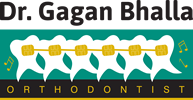Wearing braces takes some adjustment. The most important consideration for braces especially for children is that some foods are harmful to braces. We will help you with a list of foods that you or your child must avoid with braces. Simply having something new in your mouth is also an adjustment.
Eating with braces
The adhesive used for attaching the braces to your teeth fixes to your teeth rapidly. You can eat anytime after leaving our office. However, certain types foods should be avoided to avoid damage to braces for children and adults. For more information, see: Care for your braces, teeth and gums
Until you are used to eating with braces, it is helpful to follow a diet of soft foods.
Will braces cause discomfort?
At first, your braces feel like they “stick out”. This is normal. As you or your child gets used to braces and tooth alignment improves, this sensation will disappear.
The brackets, which are part of braces, have been rounded and smoothed to avoid irritation. However, you may find it helpful to use a small piece of wax around any bracket that is creating the irritation until the cheek tissues become used to it.
You will probably notice some discomfort for a few hours after your braces are put on your teeth. Usually the front teeth are “tender” and sensitive to pressure, especially during the first few hours. This discomfort will go away within a week.
Each patient’s experience is different, therefore the level of discomfort with braces varies. It may help to take a non-prescription pain reliever and follow a soft food diet for a few days.
Before leaving the office, remember: TAGS
There are routine steps, which we ask you to complete before leaving the office after each appointment. These steps will minimize discomfort related to irritation from the braces and can help make your treatment more effective. Remember the word TAGS.
Please make these steps a part of each office visit:
- Tongue: Use your tongue to check that the wire ends do not poke or irritate the cheek or tongue.
- Ask: Make sure to ask questions so you understand instructions completely. This may include wearing headgear or elastics, adjusting the expander or following specific hygiene or diet instructions.
- Gear: Make sure you have enough dental wax, cleaning aids, elastic bands or other materials to last between appointments.
- Schedule: Always schedule your next appointment before leaving the office. Appointments are scheduled 4-8 weeks in advance. Waiting to schedule your next office visit complicates the scheduling process and will extend your treatment.

